Did you know that igneous rocks form when hot magma from a volcano cools? And that the word ‘igneous’ comes from the Latin word ignis, meaning ‘of fire?’ Or that some gems, like sapphire and fluorite, form in a whole rainbow of colors? There are so many interesting facts to learn in this geology unit study for kids!
Get ready to learn all about rocks, minerals, and gems through hands-on FUN in the Rocks & Gems Family Unit Study!
What is a Family Unit Study?
But first… what exactly is a Family Unit Study?
This unit study, like all of our ever-growing library of unit studies, takes one big topic—Rocks & Gems—and breaks it down into ten manageable, bite-sized learning topics. This format gives you the freedom to dive into learning at a pace that works for your family.
Perhaps you do one area per day, perhaps one per week. Whatever suits your fancy! You can learn and explore from start to finish in about one hour per bite-sized learning topic.
Each of the ten topics included with a unit study contains everything you need for that topic, including:
- a curated YouTube video,
- suggested information to read,
- a “what’s happening” section,
- an interesting fact,
- a discussion question,
- literacy and math extension questions,
- and an ultimate-can’t-be-beat hands-on activity!
Dive in and watch the sparks of wonder ignite. Watch the child-led learning take off. Watch what happens when children are engaged in what they are learning!
Get a FREE Family Unit Study Sample
Want to see what our unit studies are like? You can download a sample from the Stars and Constellations Family Unit Study right here:
Rocks & Gems: A Geology Unit Study for Kids!
Here are some of the hands-on learning activities you and your little ones will be enjoying in this Rocks & Gems Family Unit Study:
Topic One: What is a Rock?
A rock is a collection of sand, pebbles, and gravel that have formed as one over time. Rocks are often grouped into three types: Igneous, Sedimentary, and Metamorphic. In this Family Unit Study, we will explore all three!
Hands-on Activity: To start off this Geology Unit Study for Kids, we will make our own sedimentary rock! As we do, we will talk about what rocks are made from, how they are formed, and briefly touch on the three types of rocks (we’ll learn more about each type of rock in topics 3-5).
Topic Two: The Rock Cycle
Rocks progress through a rock cycle over millions of years! A volcano brings magma to the surface of the Earth, which turns into igneous rock. Over millions of years, it breaks down and turns into sedimentary rock, and finally into metamorphic rock.
Hands-on Activity: To solidify all of our learning about the rock cycle, we will label a printable of the rock cycle. This will help us visualize how rocks can change types and the process by which they can change, like melting, temperature and pressure, or erosion and deposition.
Topic Three: Igneous Rock
Igneous rocks form from hardened lava, or magma, from a volcano. After the lava spills out of the volcano, it cools and hardens into igneous rock.
Hands-on Activity: Did you know that igneous rocks form from hardened magma from a volcano? For this topic’s hands-on activity, we are going to make our very own volcano while we learn about how volcanoes are made and the types of lava.
Topic Four: Sedimentary Rock
Sedimentary rock is made up of sand, gravel, and other sediments that have been compressed together over a long period of time.
Hands-on Activity: Who wants some layered Rice Krispie Squares?! As you melt the marshmallows and butter, you can recall how low heat over a long period of time can cause sediments to adhere together. As you stir in the Rice Krispies, you can note how Rice Krispies are kind of like pebbles or gravel that might break off of an igneous rock. As you sprinkle those sprinkles, you can note how sand and bits of shell also get layered into sedimentary rocks!
Topic Five: Metamorphic Rock
Metamorphic rocks are formed under great heat and pressure. They are found under the surface of the Earth.
Hands-on Activity: Let’s head back to the kitchen and make some pancakes for lunch! Metamorphism, the process metamorphic rocks undergo, does not actually melt the rocks. Just as your pancake did not melt. Instead, it transforms these rocks into denser and more compact forms. Metamorphic rocks are often squished, folded, and smeared, but do not get hot enough to melt.
Topic Six: Rocks vs. Minerals
Rocks and Minerals are similar and look the same, but they differ because a mineral is usually a solid compound, while a rock is a combination of minerals.
Hands-on Activity: Rocks and minerals have a lot of similarities and a lot of differences. Using a Venn Diagram, we will compare the two. Younger children can head outside and grab two rocks to compare with their Venn Diagram.
Topic Seven: What is a Gem?
A gem, or gemstone, is a mineral that has been chosen for its beauty, durability, or rarity, and has been cut and polished. Gems are typically used in jewelry.
Hands-on Activity: Gems are typically made from a mineral, but can be made from rocks as well! Today, you are going to make your own rock tumbler to transform a rock into a beautiful gem!
Topic Eight: Discover More Gems
Gems are beautiful and are used to make jewelry. You can make some pretend gems and create your own jewellery—learning about the colour wheel and colour mixing as you do.
Hands-on Activity: Head outside and gather some smooth rocks that feel nice to the touch. Now head back inside, and let’s paint! Use the included gem color chart for tips on mixing primary colors to get different gem shades. Maybe you’ll choose a beautiful Ruby Red shade, or perhaps you’re after Yellow Sapphire… or maybe Amethyst?
Topic Nine: Birthstones
Experts believe that birthstones were chosen long, long, long ago and might have a religious origin. Astrologers long ago attributed supernatural powers to birthstones. Nowadays, the wearing of birthstones is often thought to bring good luck and good health.
Hands-on Activity: Let’s do a bit of research! Find your birthstone in the included chart and use the Gem Society website or do your own research to learn all about it. When you’re done, write your findings and draw a picture of your birthstone on the included printable.
Topic Ten: Using Rocks and Minerals
We use rocks and minerals every day! From building our homes to making roads and sidewalks, and even cosmetics and beauty products!
Hands-on Activity: It’s time for a scavenger hunt! Read about all of the ways we use rocks and minerals in our everyday lives, then take a walk around your house and see how many you can find. A perfect way to wrap up this Geology Unit Study for Kids!
And there you have it, the 10 bite-sized learning topics that make up our great big Rocks & Gems Unit Study! I hope you will pop on over to check it out and consider purchasing it for you and yours.
Rocks & Gems Family Unit Study
https://shop.howweelearn.com/products/family-unit-study-rocks-and-gems
I know you will love it!
xo
Sarah
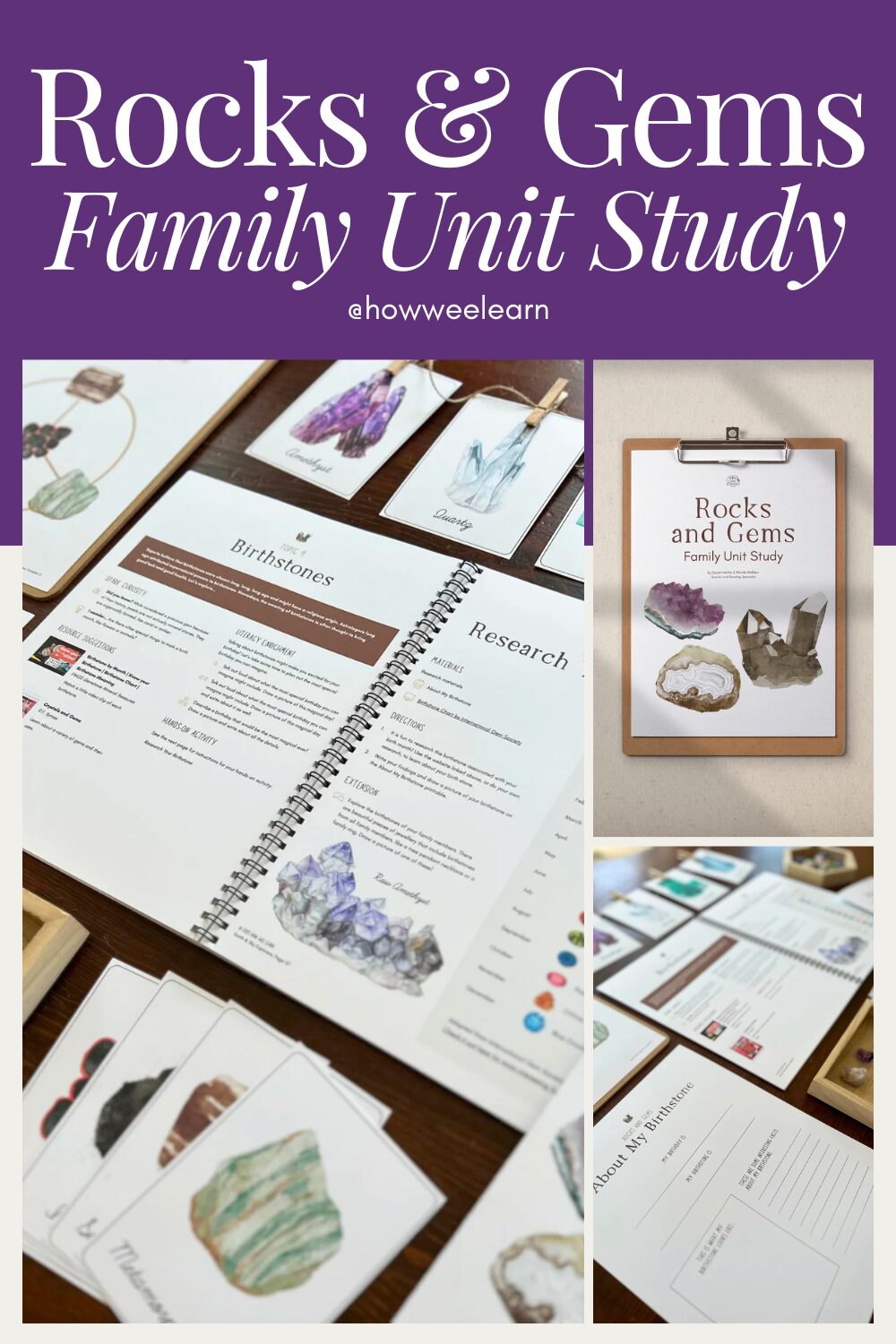
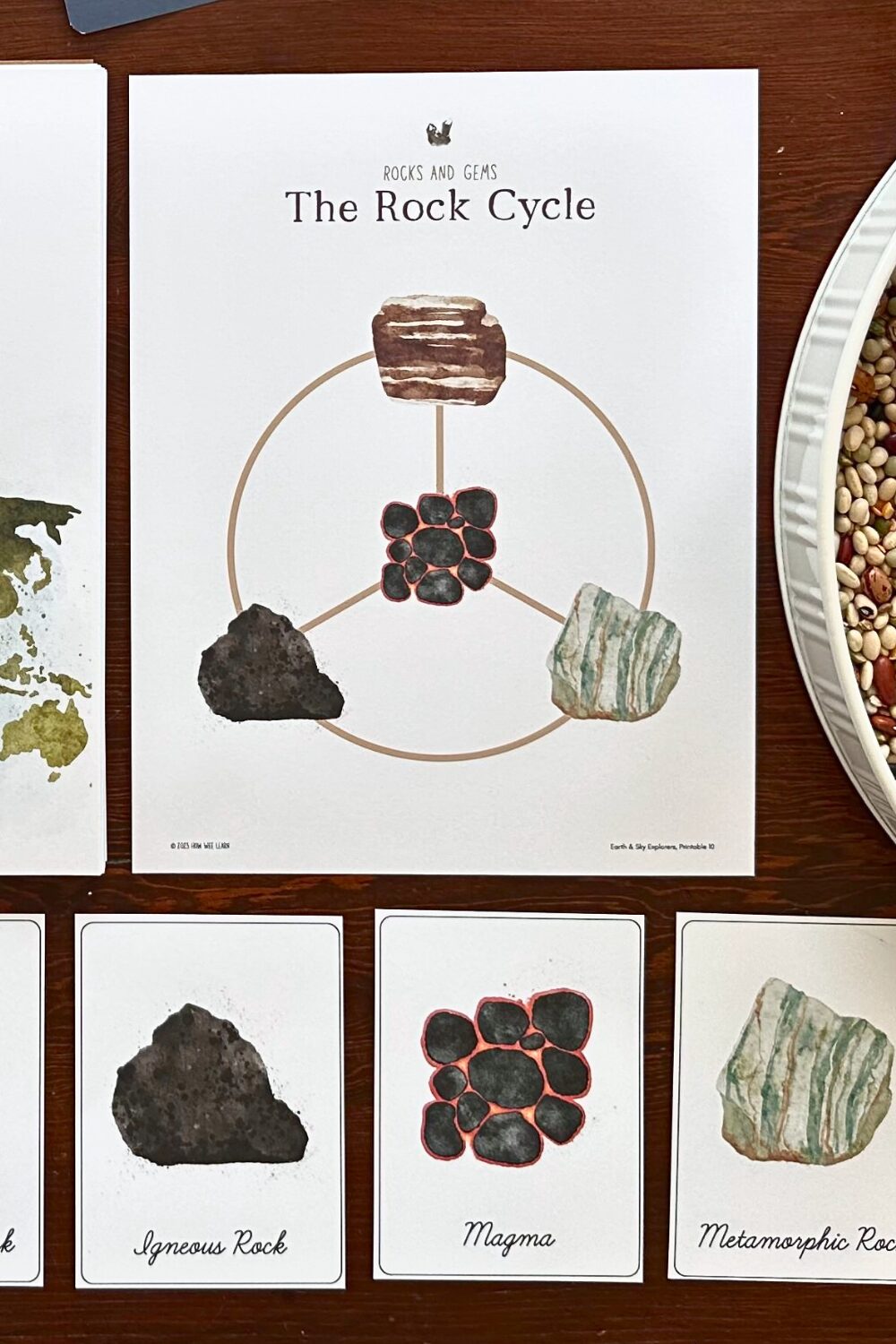
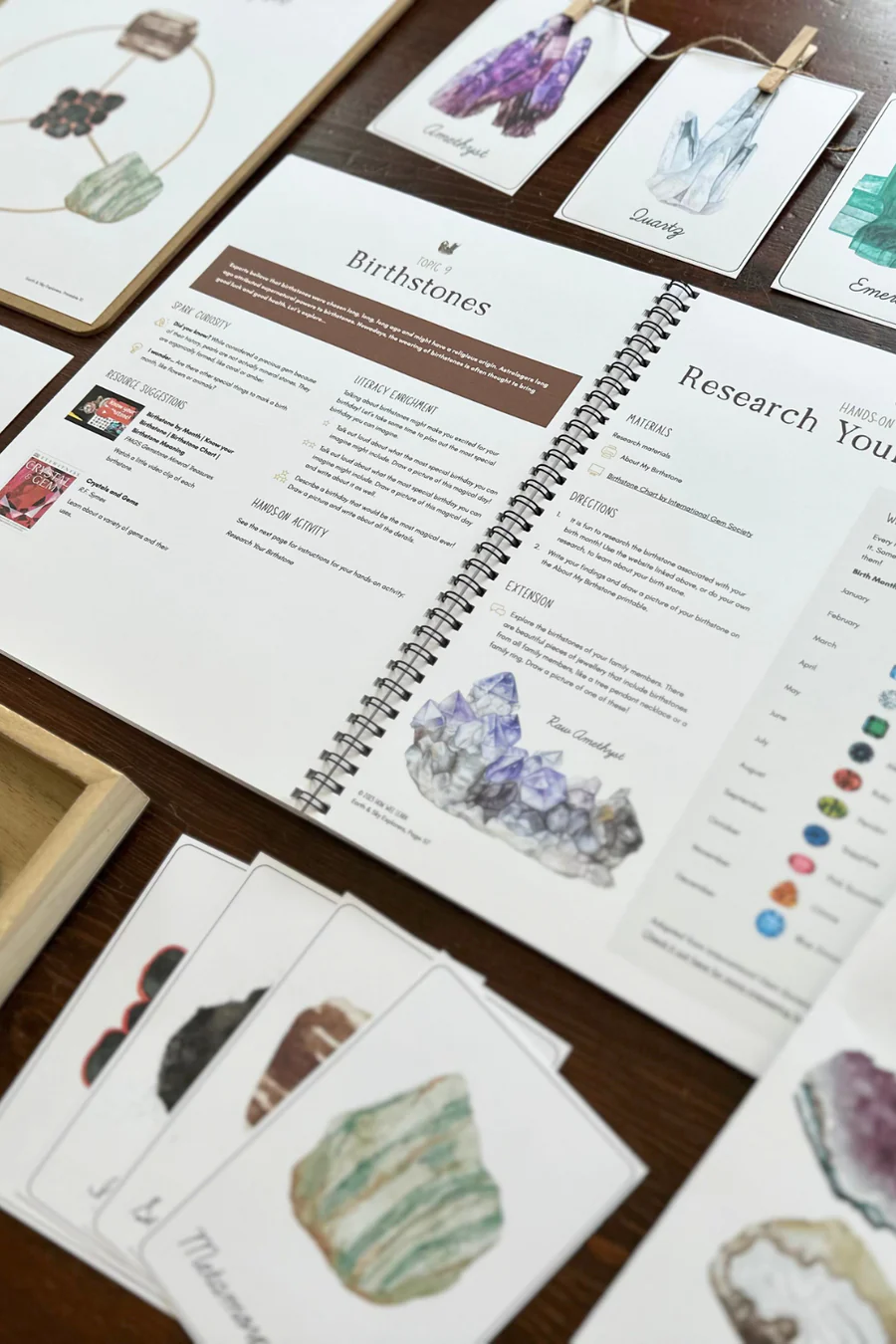
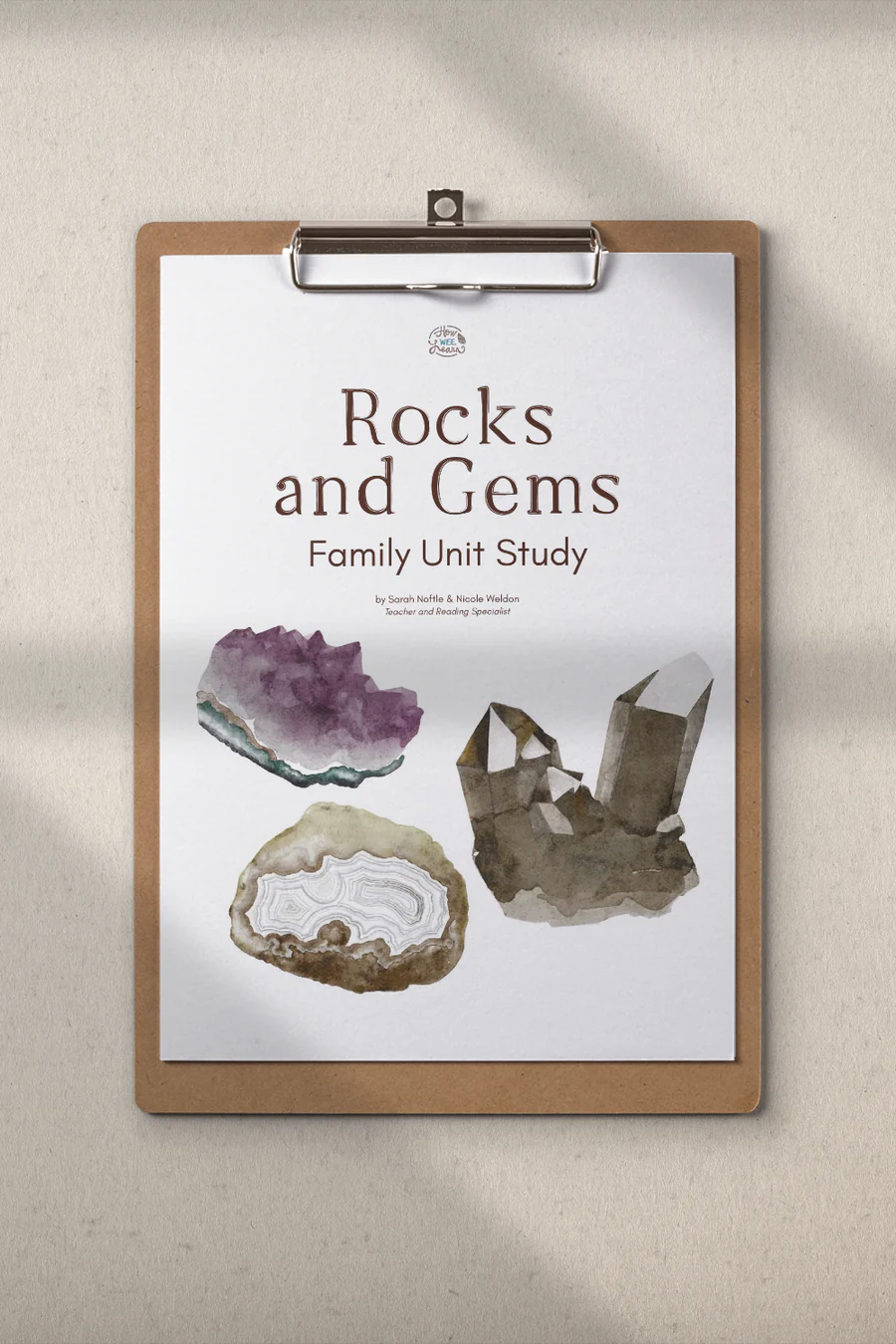
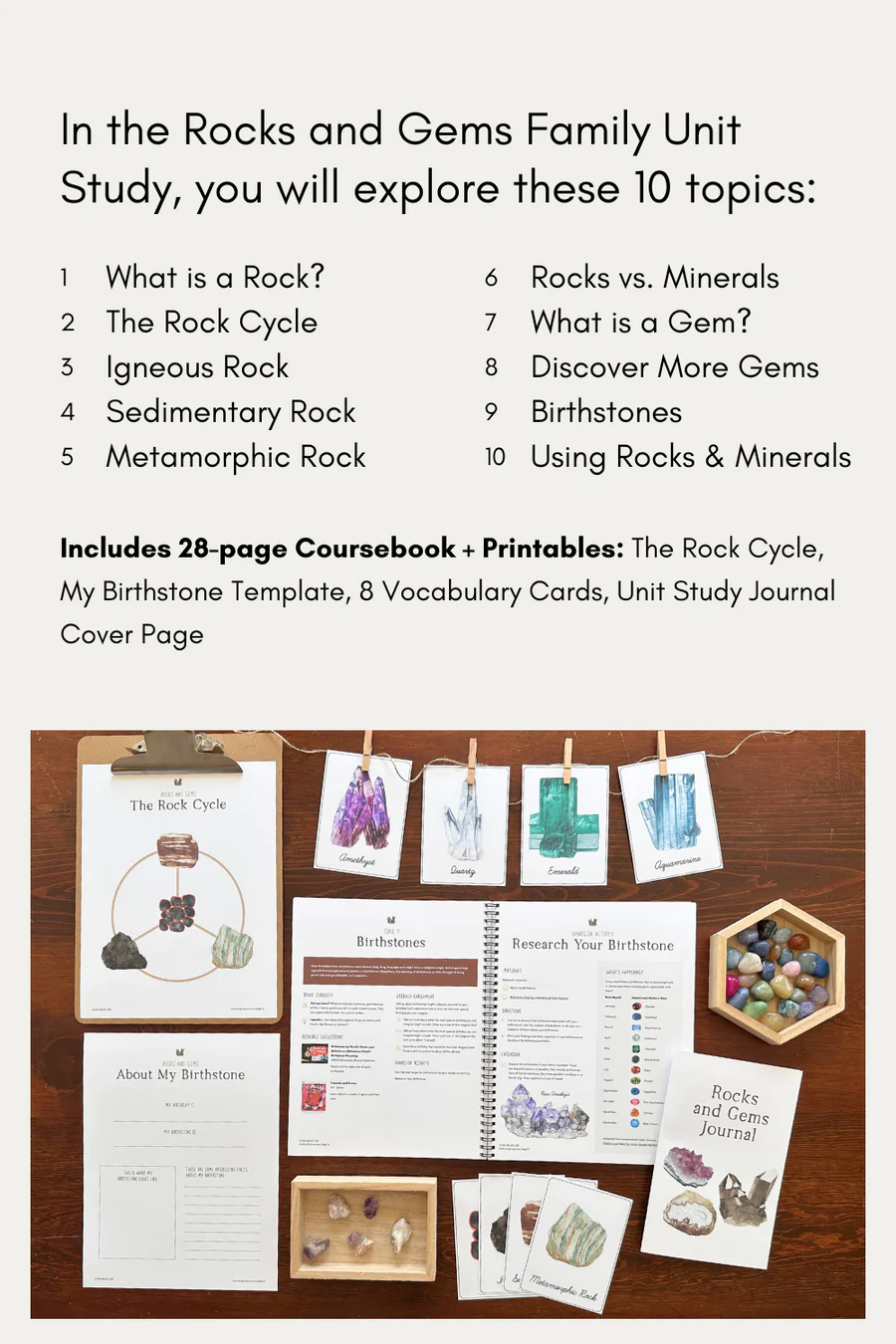
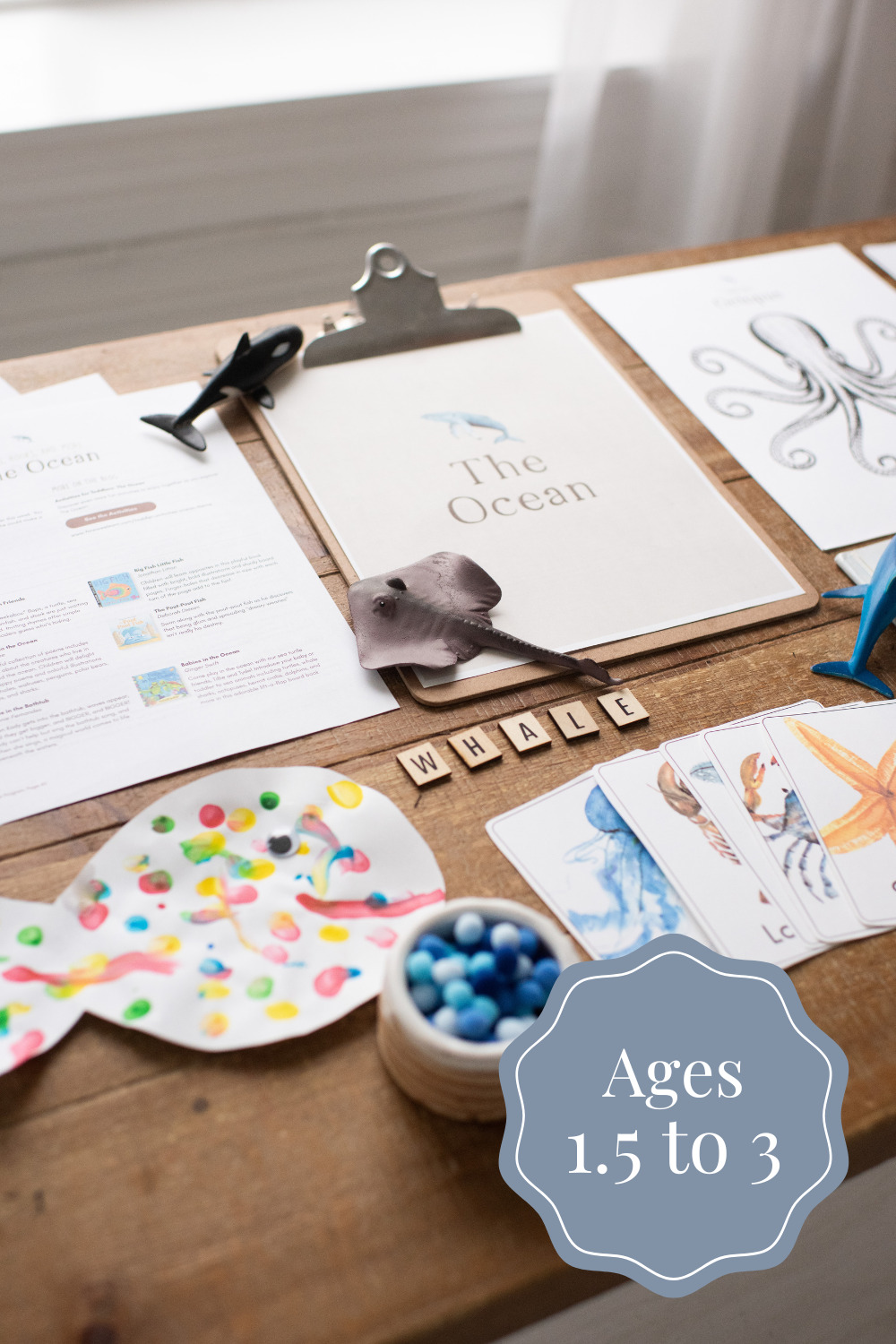
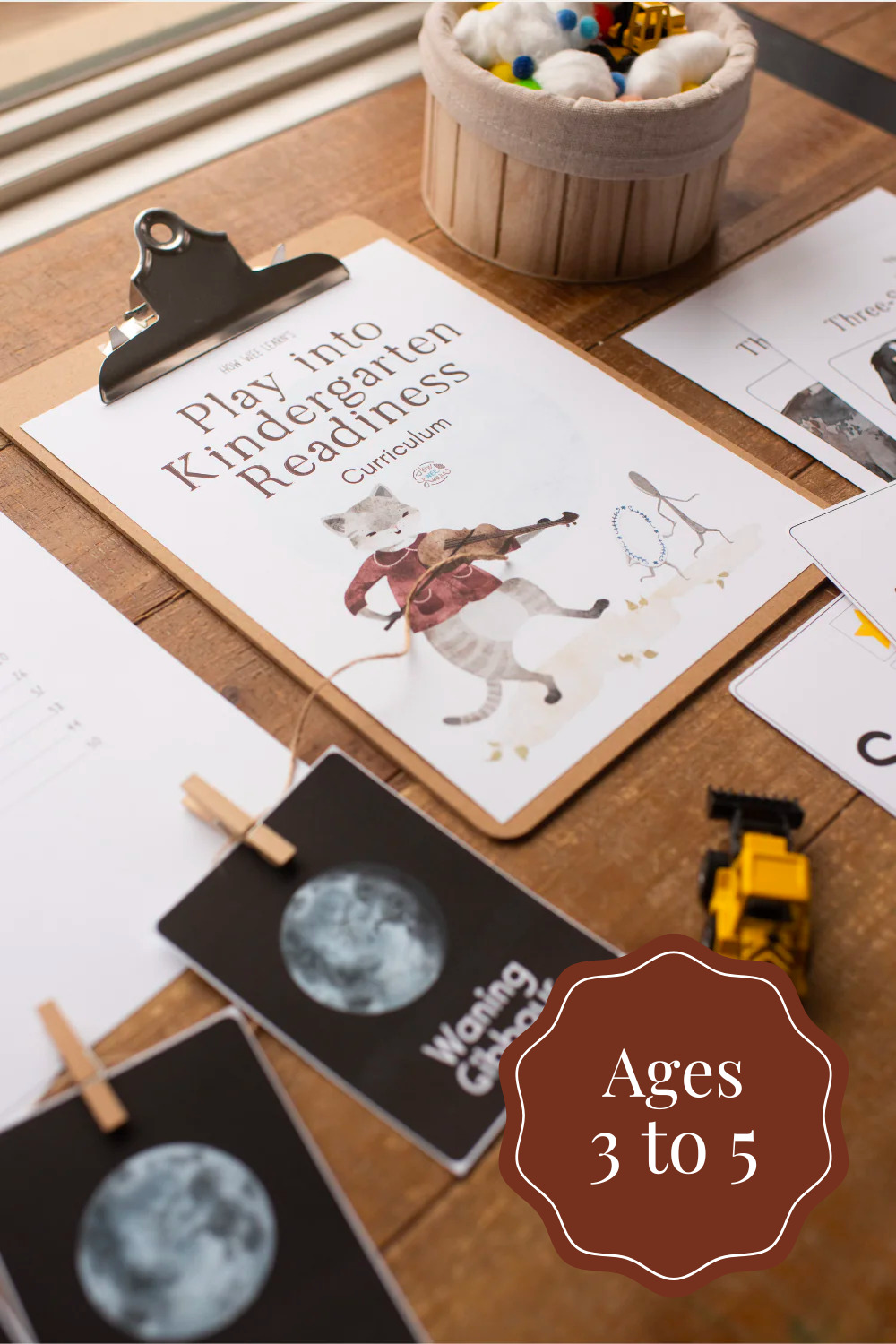
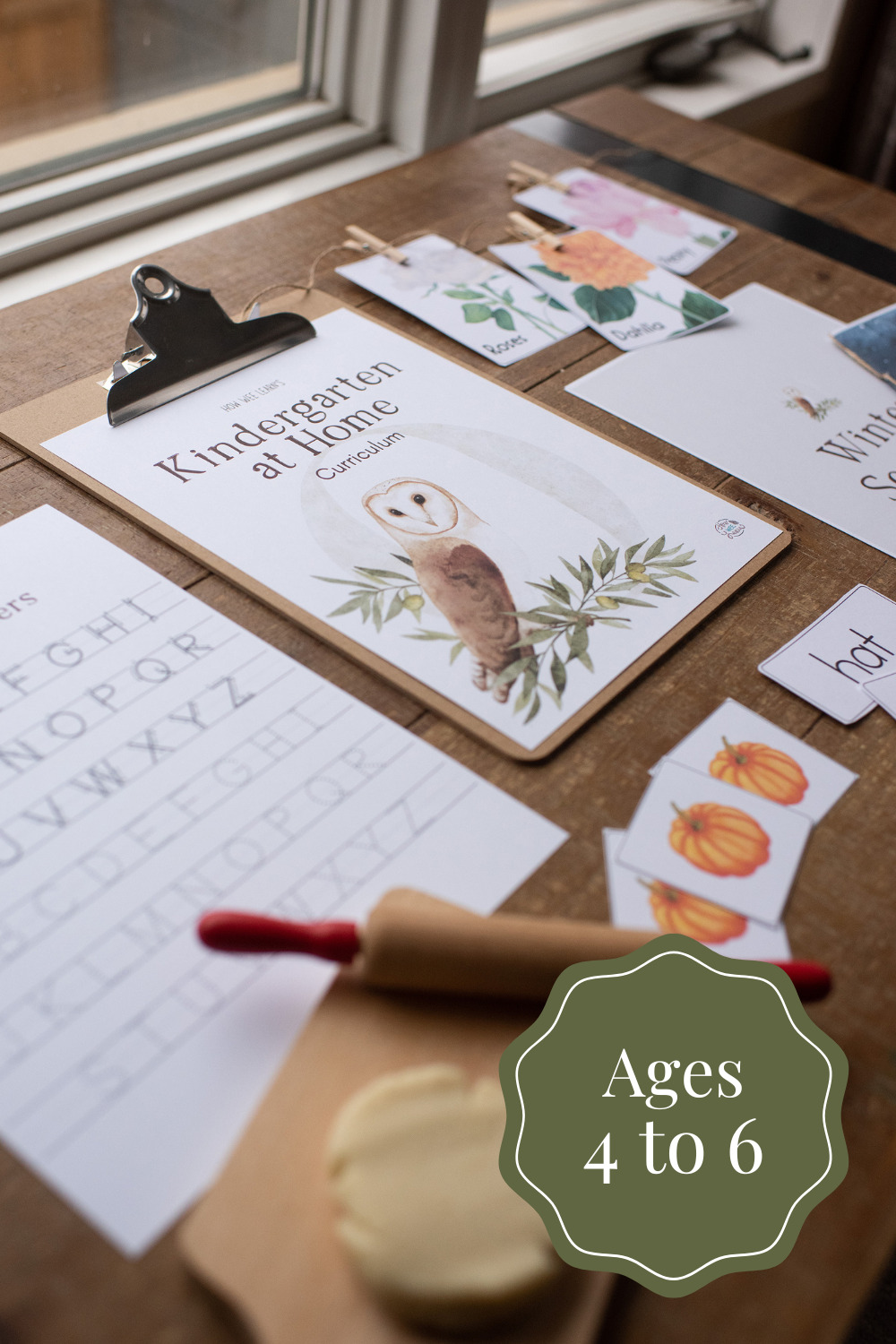
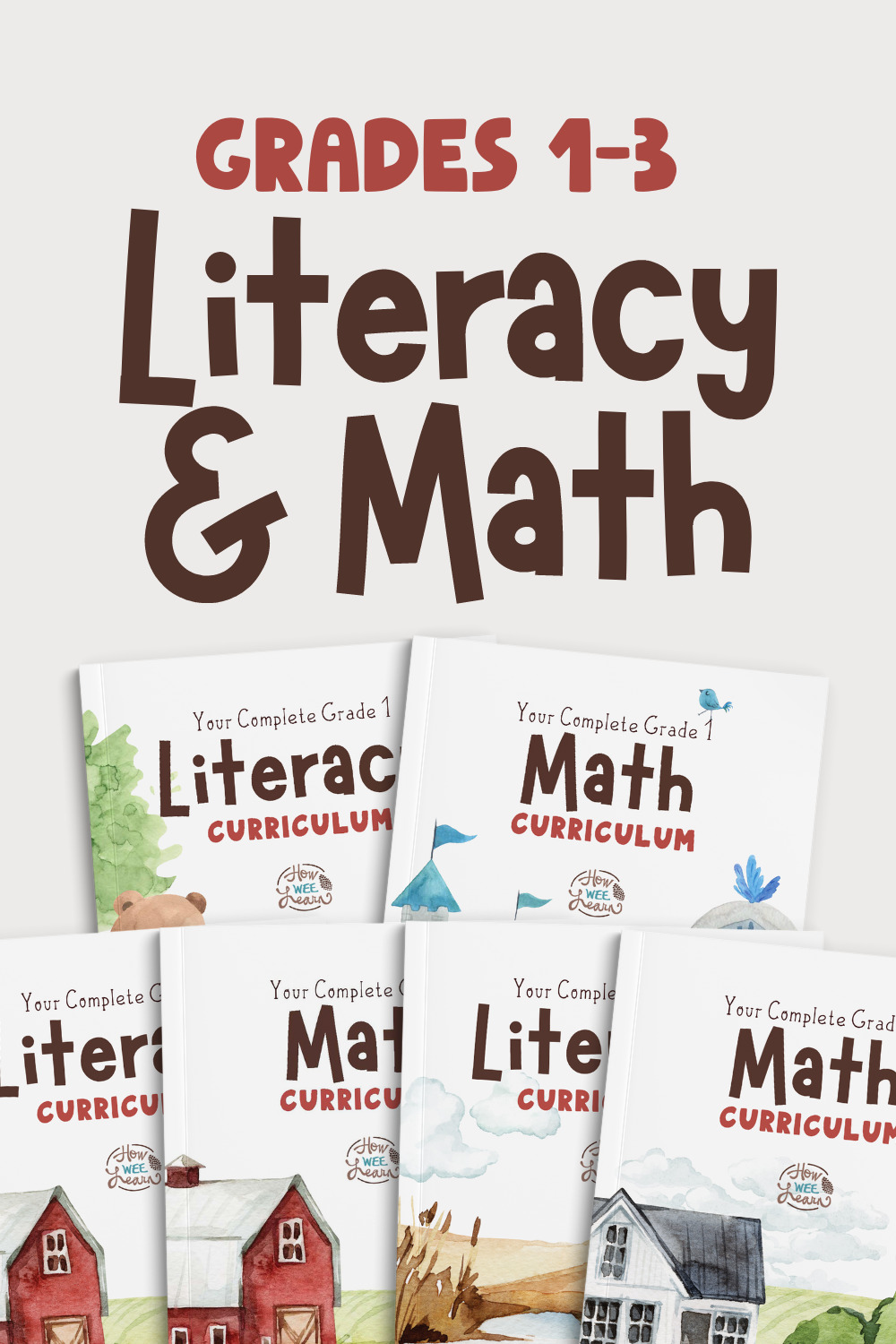

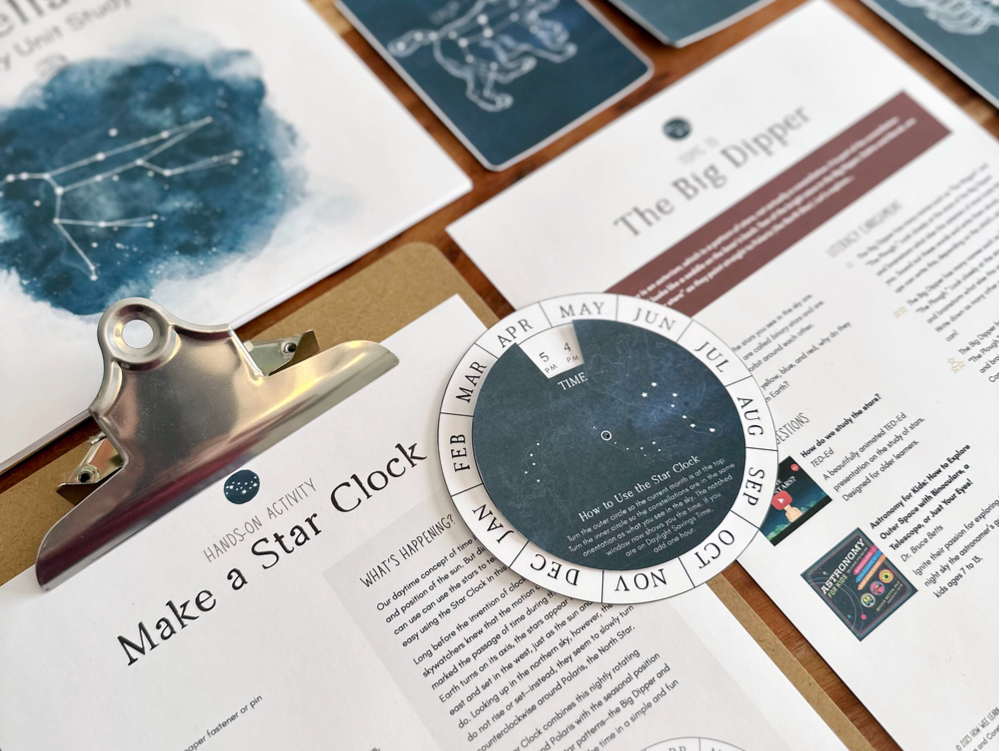
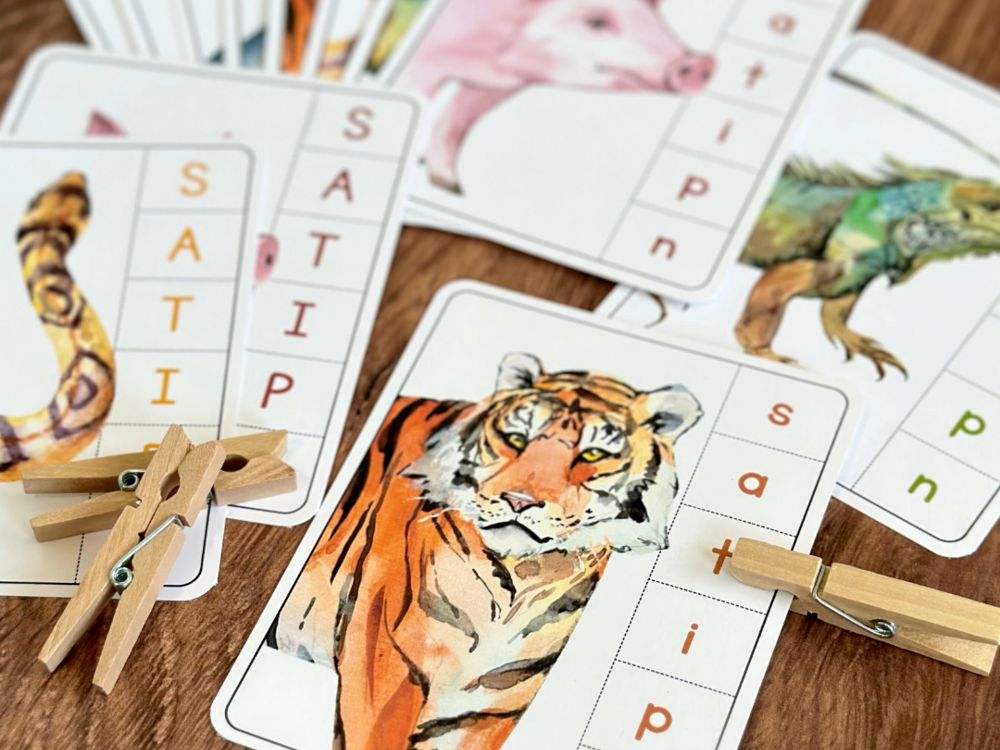
Leave a Reply